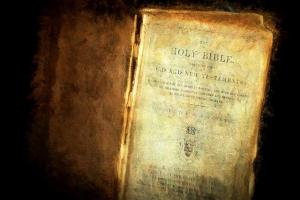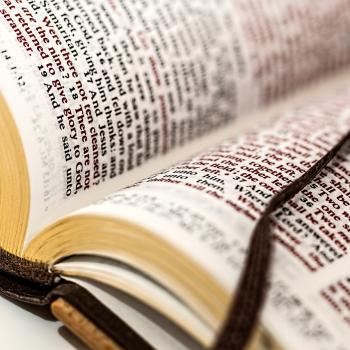 One of the unexpected joys of having a small child is having the opportunity to read aloud all sorts of children’s books, both old and new, to my baby son. And one of the volumes that has gotten a lot of circulation in my house lately is David Gordon’s truck-themed The Three Little Rigs, a brightly colored retelling of the classic story of the Three Little Pigs and the Big Bad Wolf.
One of the unexpected joys of having a small child is having the opportunity to read aloud all sorts of children’s books, both old and new, to my baby son. And one of the volumes that has gotten a lot of circulation in my house lately is David Gordon’s truck-themed The Three Little Rigs, a brightly colored retelling of the classic story of the Three Little Pigs and the Big Bad Wolf.
In Gordon’s fable, three tiny trucks build home garages out of wood, stone, and steel, respectively, in an effort to withstand the onslaught of the “big bad wrecking ball.” The big bad wrecking ball, though, is a nasty fellow indeed. He manages to take down both the wood and stone garages, although the steel garage holds up under his battering. Undeterred, the big bad wrecking ball shows up later with the “mean magnet” and the “cruel cutter” in an effort to finish the demolition work he started.
And here, The Three Little Rigs takes an unexpected turn. “Save us!” the three little rigs cry out to the “cranes”—ambiguous deus ex machina figures who have been hitherto absent from the story. The cranes dutifully swoop in to save the day, snatching up the wrecking ball, magnet, and cutter alike and dragging them away to the nearby steel mill. What happens next? “There, the big, bad wrecking ball, the mean magnet, and the cruel cutter were thrown into the melting pot.” The end.
It’s a startlingly brutal conclusion, and one that immediately evokes the imagery of Revelation 20:10: “And the devil that deceived them was cast into the lake of fire and brimstone, where the beast and the false prophet are, and shall be tormented day and night for ever and ever.” The thematic reference is so on point that I actually checked to see if the publisher was a Christian one (surprisingly, no—this is a HarperCollins release). Here we have a monstrous antagonist (the big bad wrecking ball) backed up by two subordinate powers (magnet and cutter) thrown into a lake of fire. Frankly, I find it impossible to believe that this was pure coincidence.
Now, as it so happens, this isn’t the only retelling of the classic Three Little Pigs story that’s been circulating in my house lately. Reading The Three Little Rigs inspired me to pick up a copy of perhaps my favorite fairy tale adaptation, The Three Little Wolves and the Big Bad Pig, which I used to read almost every time I visited my church library as a child.
Like The Three Little Rigs, The Three Little Wolves and the Big Bad Pig riffs on the classic story by having its protagonists use far more robust building materials. Our heroes build houses out of brick (demolished by the big bad pig with a sledgehammer), concrete (smashed apart by the big bad pig’s pneumatic drill) and a mélange of armor plates and barbed wire (blown to pieces by the big bad pig’s dynamite).
This story, though, ends quite differently from The Three Little Rigs. The three little wolves, with their three prior homes in ruins, choose to do something quite different: to build a house made of flowers. The big bad pig arrives to huff and puff and blow their house down, but in the very moment of inhaling, he smells the lovely scents of the flowers and experiences an epiphany. Overcome by the beauty before him, he is transformed and becomes a “big good pig” who goes on to live happily ever after with the little wolves.
Growing up, I was under the impression this too was an explicitly Christian book (evidently it’s not) because I originally found it in a church library, and because the whole redemptive arc of the story seemed to point in that direction. In this tale, fear and destruction are swallowed up by an act of sacrifice—the three little wolves’ abandonment of ever-more-secure housing arrangements—that opens up an entirely unexpected future.
From a certain point of view, both of these Three Little Pigs retellings transform a simple Aesop-like fable into something with much greater existential significance. Neither of these is your standard “fractured fairy tale” (for that, one must look to Jon Scieszka’s The True Story of the 3 Little Pigs!); rather, they’re extensions of the perceived moral logic of the underlying story. In The Three Little Rigs the threat of violence is broken by enlisting a higher, righteous violence; in The Three Little Wolves and the Big Bad Pig, violence is subverted through surrender. One could call this the logic of Armageddon and of Calvary, respectively.
I might suggest that which book’s vision seems truer is, in the end, a fundamental question of theological instincts—whether, with Hans Urs von Balthasar, one dares to hope that all men might—might—be saved, or whether, with Thomas Aquinas, one believes that those in heaven “are allowed to see perfectly the sufferings of the damned . . . in order that the happiness of the saints may be more delightful to them and that they may render more copious thanks to God for it.” Speaking just for myself, I certainly find the Big Bad Pig’s redemption arc more fundamentally consistent with the Christian story of reality. And indeed, it isn’t just the Pig who is redeemed; as the story unfolds, the Three Little Wolves find themselves sealed within more and more inhospitable defensive structures, from a Brutalist concrete courtyard to a structure that looks like a Supermax prison. In forgiving their enemy, they finally find a far greater kind of freedom themselves.
To be clear, I would never elevate such an impulse to the level of a presumption, or even a working assumption. And I long for the final glorious defeat of evil as much as anyone. But I am also open to the possibility that that defeat of evil may look very different than any of us could ever expect.












